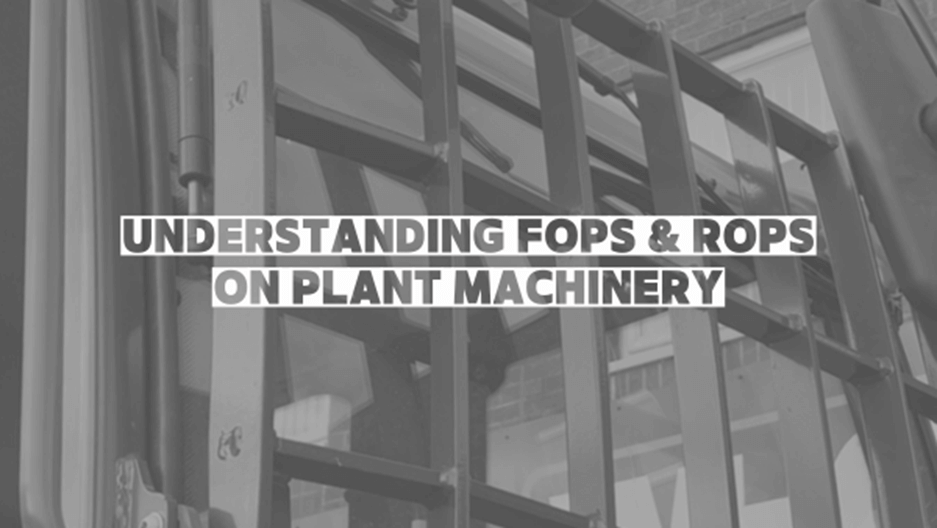Understanding FOPS & ROPS On Plant Machinery
Do the abbreviations FOPS and ROPS mean anything to you? Well, if you are responsible for your staff’s safety in the workplace, then being aware of these structures is essential to modern construction. This article is going to help you differentiate between to two, and look closely at how you can remain compliant with the Health and Safety at Work etc. Act 1974.
The safe operation of plant equipment throughout construction is paramount. To reduce the risk of nasty accidents happening, ensure your machinery is equipped with the latest operator protective structure (OPS). Let’s start with FOPS.
What is FOPS
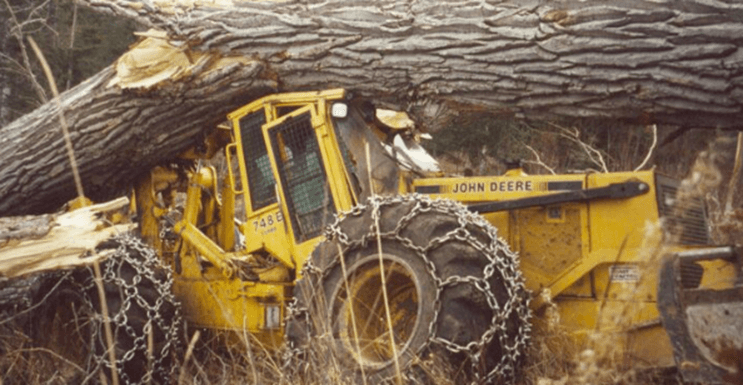
A Falling On Protective Structure (FOPS) is a vital and lifesaving feature on construction, agriculture and industrial vehicles. Furthermore, they are designed to prevent falling objects from penetrating the roof of the machine and striking the operator.
FOPS structures are found on most large earthmoving equipment such as excavators, dumpers, telehandlers and forestry equipment. In 1988 legislation was introduced to ensure that fall-on protective structures are tested to and issued with an EEC type of examination certificate.
FOPS levels in construction
There are two types of FOPS levels to be aware of, which is available on construction machinery. The first is level 1 FOPS, which is testing for protection from small tools, bricks and hand tools. Level 2 ROPS testing accommodates for larger objects such as rocks, trees and heavy objects.
Some construction tasks may require different levels of safety management. Therefore, you should always refer to your risk assessment prior to choosing the adequate machinery for your project. FOPS-level testing should be clearly identified, however, if you are ever unsure, speak to your equipment supplier directly. The use of unsuitable machinery can lead to accidents occurring and even fatalities.
What is ROPS
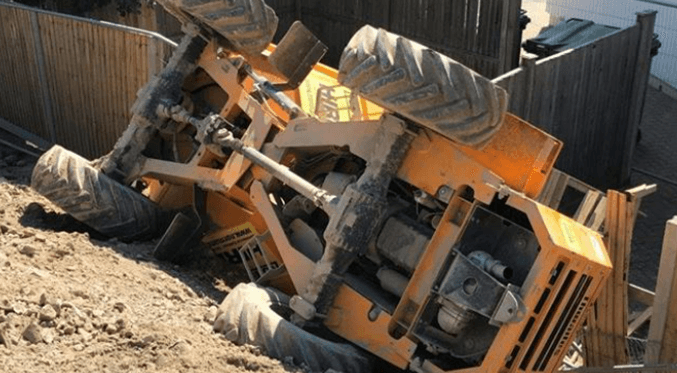
Roll Over Protection System (ROPS) is designed specifically to protect operators should machinery overturn. This happens to be the most common accident within the UK construction industry. It is important to note that this protection system only works provided the operator uses the seatbelt correctly.
There are commonly 3 types of ROPS structures that you will find on construction and agricultural machinery.
- 2 Post ROPS
- 4 Post ROPS
- Enclosed Cabin ROPS
2 Post ROPS

These types of systems are usually found on the back of small machinery such as micro diggers, mini dumpers, and road rollers. These structures tend to be foldable and are secured before operating the equipment.
4 Post ROPS

Unlike other designs, 4 post-ROPS are attached axles or the body of the machine providing greater levels of protection. This can also be described as an open cabin on some equipment designs. This level of ROPS protection encases the operator within its housing providing seatbelt worn correctly.
Enclosed Cabin
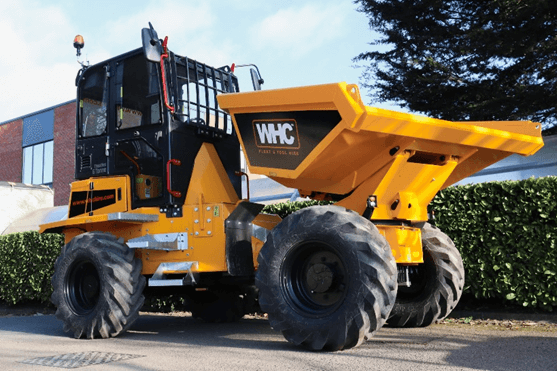
Enclosed cabins are considered the safest protection for all types of construction use. Therefore, you should find these on all large excavators, dumpers, telehandlers and rollers. Unlike 4 Post ROPS, these systems use safety glass around the structure to further protect the operator should the machine overturn.
Site dumper legislation change 2025
A change in legislation coming into effect in 2025 states that all site dumpers of an unladen weight of more than 4.5T must be fitted with a level 2 FOPS & ROPS cabin. Ultimately, this introduction aims to protect the operator should an accident occur.
The legislation also states that the cabins must be production-fitted and tested in line with ROPS and FOPS ISO 3471 & 3449. Therefore, to remain compliant you need to ensure your dumper is suitable and safe for all applications.
Many plant hire suppliers have already switched to using cabbed articulated dumpers prior to this legislation coming into effect. Therefore, the transition will be completely seamless. However, if you own a site dumper without a cabin, now is the time to act.
How to identify ROPS & FOPS Labels
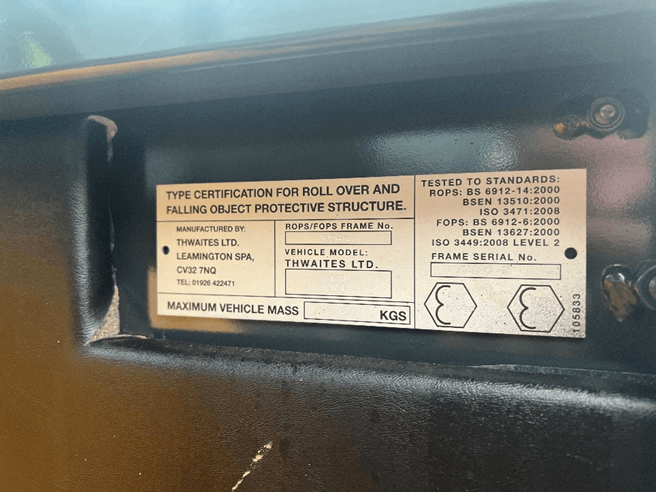
The identification labels of ROPS and FOPS structures are permanently attached to the machine you are using. However, if these identification tags cannot be found on the machinery, the equipment is likely unsuitable. Labels are generally attached to the corresponding structure.
The identification labels include the following information about the tested structure:
- Name and address of the manufacturer.
- Identification numbers.
- Make, Model of the tested structure is attached to.
- Machines Mass
- Another other information deemed necessary.
If for some reason your FOPS & ROPS structure does not have a permanent testing label attached to it, then you should speak to your supplier immediately.
Additional costs for ROPS & FOPS on hired machinery
All hired machinery should be equipped with a ROPS bar as a minimum. However, it is essential to choose the right equipment with an adequate safety structure for the task at hand. During the planning phase of your construction project, you can highlight where additional risk management can be adopted to protect operators.
In terms of costs, expect to pay more for equipment that offers greater operator protective structures. An example of this is with Cabbed Articulated Dumpers. There is around a 13% increase in cost compared to standard machines that do not offer this feature. For more information on this, check out “cost of cabbed dumper hire: the breakdown”.
Live impact testing of FOPS & ROPS Structure on cabbed dumpers
Shared from Thwaites Dumpers LTD (Thank you to their team for allowing us to share this)
“Thwaites Dumper Cab Impact Test
Conducted on the Thwaites proving ground Leamington Spa in November 2019.
The test was initiated with the objective of understanding the structural integrity of the cabs fitted to Thwaites dumpers, if impacted during the loading procedure by an excavator. The machine used was a standard 9 tonne Thwaites Dumper, the excavator was a 14tonne machine with a fully extended boom, slewing a loaded bucket at full speed.
The ground conditions were wet, with the environment created being congruous with those found on site. The cab fitted was compliant to ROPS (Rollover Protection System) & FOPS (Falling Object Protective Structures) ISO 3471 & ISO 3449Conducted by Thwaites Engineering Manager Bob McElvogue the test was divided into two sections.
Test 1: Testing the structural integrity by striking the cab at the A pillar.
Findings of test 1:No failures were observed or reported on inspection, the energy of impact was absorbed through the cab structure.
Test 2: Testing the fully finished cab by striking the cab at the front via a screen guard.
Findings of test 2: No failures were observed or reported on inspection. The screen guard performed well in absorbing the initial impact with the force being distributed through the cab frame. Recommendations: The Contractors Plant-Hire Association (CPA) via a stakeholder working group produced and issued in May of 2019 The safe use of dumper guidance.
Conclusion
Using dumpers safely depends on a number of factors including planning, supervision, selection of a suitable machine, competence of personnel, effective exclusion zones and keeping within the operational limits of the dumper.
If any of these are deficient, the risk of a serious accident increases significantly and it is therefore essential that all of those involved ensure that dumper operations are properly planned, managed, supervised and carried out safely by competent people.
Thwaites recommends that in conjunction with the CPA guidance and HSE (Health & Safety Executive) guidance that operators do not remain in the cab during loading. Always carry out your own risk assessment before operating any item of plant equipment and ALWAYS wear a seat belt.”
Where to hire plant machinery fitted with FOPS & ROPS

WHC Hire Services offers the latest safety structures on its plant machinery in line with the latest UK legislation. With a vast range of safety systems across our fleet, we can help you find the right equipment for the job at hand. Check out our online catalogue or contact one of our hire team experts to arrange a quote or delivery today. 01684377977

